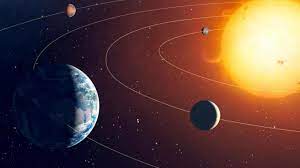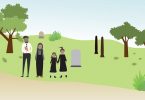| One year is the time required for the earth to travel around the sun. |
| For most of history, however, people did not know that the earth moved around the sun. |
| Instead, people believed that the sun moved around the earth. |
| The old idea that the sun moved around the earth is known as the “geocentric” theory. |
| This idea was first made famous by an ancient Greek scientist, Ptolemy, |
| who lived in Egypt nearly 2000 years ago. |
| Some other Greek philosophers had suggested instead that the earth might travel around the sun. |
| However, this idea, which is known as the “heliocentric” theory, was not widely accepted. |
| For centuries, people in Europe did not seriously question Ptolemy’s geocentric theory. |
| During the early fifteenth century, however, |
| a Polish astronomer named Nicolaus Copernicus |
| began to think that the heliocentric idea was right, |
| and that the geocentric idea was wrong. |
| Shortly before his death, |
| Copernicus wrote a book that described the mathematical details of his theory that the earth revolved, or traveled, around the sun. |
| Later astronomers came to agree with Copernicus’s view. |
| One of the most famous of these was Galileo, an Italian scientist. |
| Galileo was famous for demonstrating that light and heavy objects fall at exactly the same speed, |
| unless an object is so light that it is slowed by the air. |
| Galileo was also the first astronomer to use a powerful telescope to observe the sky. |
| He discovered many unknown features of the moon, the sun, and the planets. |
| When Galileo announced that he believed in Copernicus’s theory that the earth revolved around the sun, |
| some officials of the Roman Catholic Church were angry. |
| They argued that this theory was against the beliefs of the Church. |
| Some church officials disagreed with this view, |
| but the authorities decided that Galileo should be punished by “house arrest” |
| In other words, Galileo was not allowed to leave his house. |
| Also, Galileo was forced to make a public statement that renounced his belief in the heliocentric theory. |
| At about the same time that Galileo supported the heliocentric idea, |
| another astronomer did some important work that supported Copernicus’s view. |
| This astronomer was Johannes Kepler, who lived in Germany. |
| Kepler used the observations of previous scientists to figure out the motion of the planets around the sun. |
| He realized that the planets did not travel in circular paths, |
| but instead, in paths that were elliptical, or oval, in shape. |
| Kepler’s discoveries showed mathematically how the planets would revolve around the sun. |
| Today, everyone knows that the earth moves around the sun; |
| but for a long time, it seemed more reasonable to believe that the sun moved around the earth. |
| We can thank the great scientists of the past who discovered the surprising truth. |
More English listening lessons for intermediate level:
Lesson 48: The origin of Canada and the United States





